One day, four years ago, when my website <www.blutimescubahistory.com> was published I received an email from a dive instructor whom I knew. Very seriously he asked me to correct the definition that I gave to regulators, since I called “double hose regulators” those known to everybody as “single-stage”. After a while I received another email, this time quite funny, from the office of a dive company asking me “what I smoked” to have invented such a definition.
Timidly, I tried to explain saying that since ever, all over the world, single body regulators with two large, corrugated hoses located sumptuously around the head are called “two-hose regulators”. American and English people they call them “two-hose regulators”, French people “Detendeurs a deux tuyaux”, German people “Zwei Schlauch Lungenautomat”, etc.
We know, we have always liked stages of any kind and we have a total dislike for tubes; in fact, talking to a fool or discussing animatedly with a friend we happen to say, “you don't understand a tube”.
Accordingly, to use words like stage and tube to define our trusted regulator could have appeared inappropriate.
Probably, these are not the real reasons which brought us to call “single-stage” those magnificent tools, protagonists of adventurous and marvelous diving activity of historic times. Definition that is a nonsense, technically wrong in its generalization, considered that several two-hose regulators born during the decades had two pressure reducers, so they had two stages. To begin from the real first one, the CG45 regulator of Cousteau-Gagnan who, in 1946, invented to take underwater the free man.
By checking the above-mentioned website, in the section reserved to those specific regulators, we can count a hundred of models of which, half, are two-stages, with their pressure reducer built-in or applied externally of the regulator box. Why in Italy, the only one, we invented to call them all “single-stage”?
Certainly not because those designed and built by our local companies were all single-stage; in fact, the 1960 Salvas Aquasprint was two-stage, like the Mares Air King B60, like the Tigullio-Cirio Super Abyssal of 1958 and 1961. And two-stage were of course the Pirelli Explorer Standard and the Tricheco (Walrus); but let's not get confused, these don't count because they were single-hose.
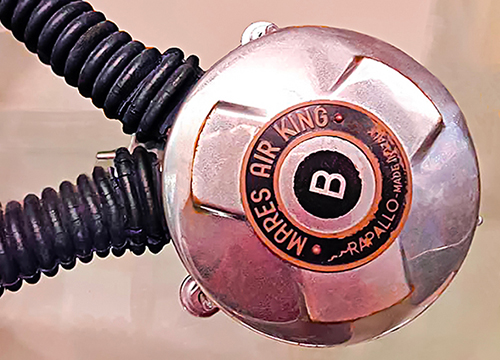
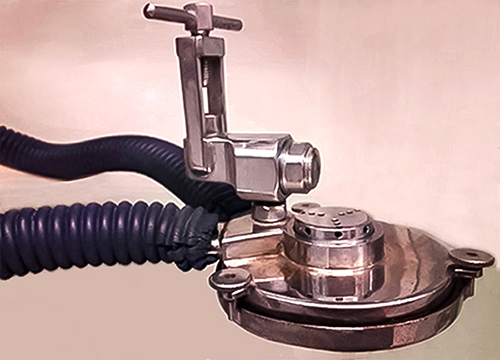
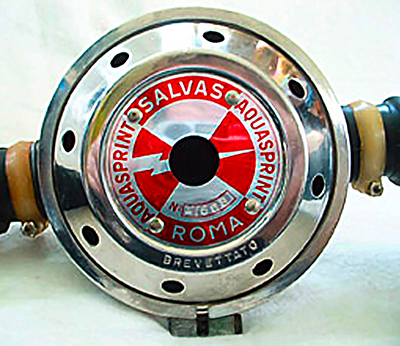


Forgetting the far America and limiting ourselves to widen our look to our European cousins, we see that the two-stage regulators with two hoses manufactured by the companies in the 60s were a small fleet. Let’s list them: Dräger Duomat of 1968 - Dräger PA 61 II of 1962 - Heinke Mk V Merlin of 1961 - Medi Hydromat of 1966 - Nemrod Snark III Silver of 1973, presented as a tri-stage, with its last series in 1982 - New England Divers Hydro Twin of 1963 - Norseman Viking of 1961.
Why two stages? Which was the reason of a pressure reduction before taking air of the tanks to the chamber, that is the regulation chamber closed and controlled by the large membrane? The basic goal was to have a softer and regular air flow in each situation, above all at small depths, by keeping it constant, independently from the residual pressure in the tanks. To reach this goal, different other solutions were studied, working on the Venturi effect; this happened above all in the USA where innovations were travelling quick, although no one fully achieved the results targeted by the designers

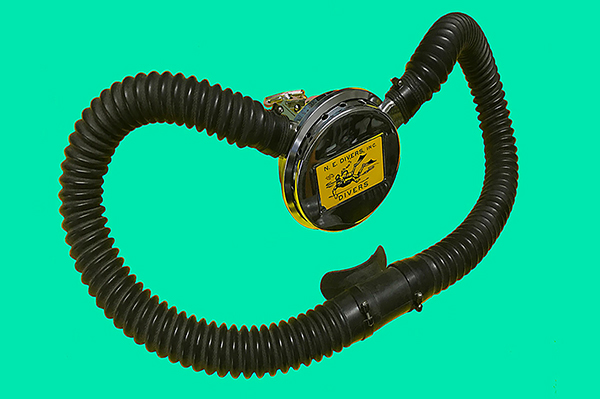


In the meantime, Spirotecnique confirmed the simplest and cheapest choice of single stage made in the past, passing from CG45 to Mistral regulator. Thanks to the continuous tests of Eng. Gagnan in Canada, in 1963 the Royal Mistral was born, a good jump ahead with respect to the Mistral, and to many others. Royal Mistral advantages derived from the lenticular shape of its box and the special arrangement of the air flow outlet nozzle, both measures aimed at favoring a calibrated Venturi effect; the corrugated hoses were also softer and more elastic than any previous one.
Thanks also to the undisputed fame of the manufacturer and the Cousteau name, in the mid-60s the Royal Mistral was taking over in all Europe and beyond. And it was a single stage.
Is this a reason enough for us to call all those two-tube appliances “single stage”? It would not seem so, so the reasons must also be sought elsewhere.
In that time, to dictate the diving way in Italy there were mainly three names: Fips, Marcante, Ferraro. Fips, which decades after became Fipsas was the only diving agency in Italy. Duilio Marcante was the absolute chief of the diving sector, author of manuals and rules. Luigi Ferraro, besides his war honors had the fame for the Cressi projects, in the first 50s, of Pinocchio mask and Rondine fins; he founded the first Italian diving club called Uss Gonzatti; he realized futuristic things, for that time such as diving tourism, diving shows, dive training courses for tourists, born long before the wedding diving-Fips. Marcante and Ferraro were friends, cooperating together
Whatever thing or word came out of that trio of names became law, or gospel if you prefer, so if in his Fips-branded manuals Marcante simply called that type of regulator "single-stage", the whole national diving world accepted the term without even a moment of uncertainty.
Already in some mimeographed handouts, which then went on to form the intimidating "Manual for the diver training - compendium of federal texts in force since 1965", from which the "Federal Diving Manual" of 1972 was derived, regulators were divided into the two categories of single-stage and two-stage.
Two-stage regulators were obviously intended only those with two small parts connected by a hose, like the current ones. Perhaps, not to make things complicated, there was no word to the models with two tubes and two stages; not even a mention to be considered a technical information.

Another reason to speak exclusively of single-stage without ever mentioning the existence of similar two-stage devices may have been of a "localist" character, being Technisub owned by Ferraro.
We must consider that Technisub was the exclusive distributor of La Spirotechnique, since when it was born in 1962, of Mistral and Royal Mistral regulators, both single-stage.
Never in the courses or at the federal exams of that time, where Mistral regulators were exclusively used, was there any mention of different products, despite the excellent success in Europe and around the world, for example, of the Spanish Nemrod Snark III imported also in Italy.
Probably, the sum of all these elements was decisive to make the name single stage take root in Italy.
“Old” divers transmitted it to the next generations, which continued to call this any regulator with two large, corrugated hoses, dismissed since a long time and seen only as a museum piece.
A so embedded definition that, even during a dedicated webinar and video conference of last winter a speaker, talking about regulators, lengthy talked of single stage and double stage.
Old habits are never forgotten.
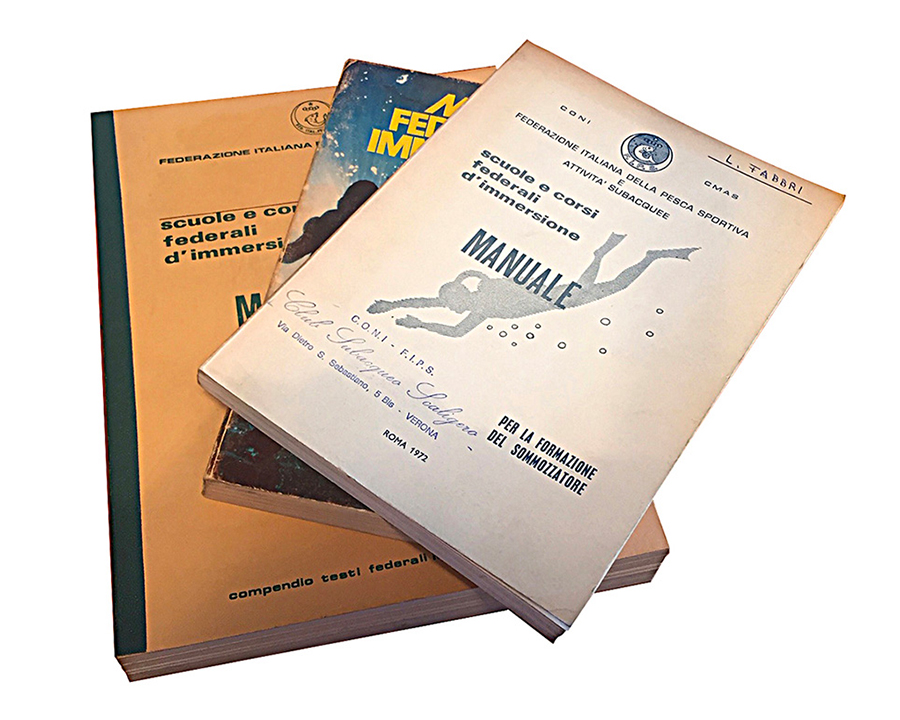
______________________